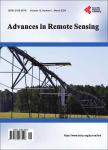Ecological Zones Degradation Analysis in Central Sudan during a Half Century Using Remote Sensing and GIS
Ecological Zones Degradation Analysis in Central Sudan during a Half Century Using Remote Sensing and GIS作者机构:Department of Geoinformatic College of Graduate Studies Arabian Gulf University Manama Kingdom of Bahrain UNESCO Chair in Water Resources Omdurman Islamic University Khartoum Sudan Institute of Environmental Studies University of Khartoum Khartoum Sudan
出 版 物:《Advances in Remote Sensing》 (遥感技术进展(英文))
年 卷 期:2016年第5卷第4期
页 面:355-371页
学科分类:07[理学] 0701[理学-数学] 070101[理学-基础数学]
主 题:Ecological Zones Climate Change Change Detection SPOT-VEG NDVI Sudan
摘 要:Since the last assessment of ecological zones of Sudan conducted in 1958 by Harrison and Jackson, the vegetation types, cover, and its distribution have undergone remarkable changes;this change occurs in most of the predominant ecological zones, particularly those which are currently affected by environmental degradation and desertification due to climate change impact on vegetation cover and rainfall amounts and its distribution. In addition, during the last five decades, Sudan has suffered from environmental devastating changes that have undermined food security, which is strongly linked to human displacement and related conflicts. In this study, SPOTVEG NDVI data acquired between 2000 and 2010 were used to produce a vegetation cover map, which was integrated with rainfall map to produce updated ecological zones map for the study area in 2010. This map was compared to that produced in 1958 to analyze the change during the last five decades. The obtained results showed drastic change concerning different ecological zones. The desert class increased by 11%. The Semi-Desert class decreased by approximately 13.2%. The woodland savannah class increased by 6.8%. While, the Mountain vegetation areas decreased approximately by 3%. Finally, the wetland areas completely disappeared in 2010. These results show that during the period 1958-2010, climate change impact increased desertification process, destroyed ecological zones, especially wetland, as well the ecosystems diversity in Central Sudan.



